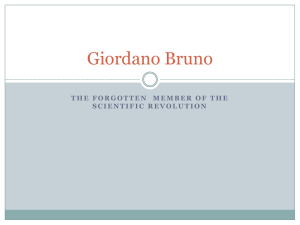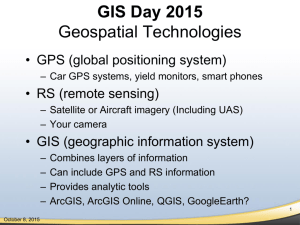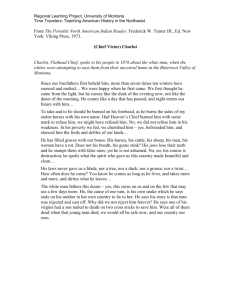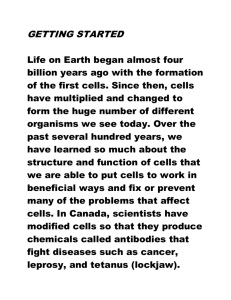Evaluation of novel thermally enhanced spectral indices for mapping fire
advertisement
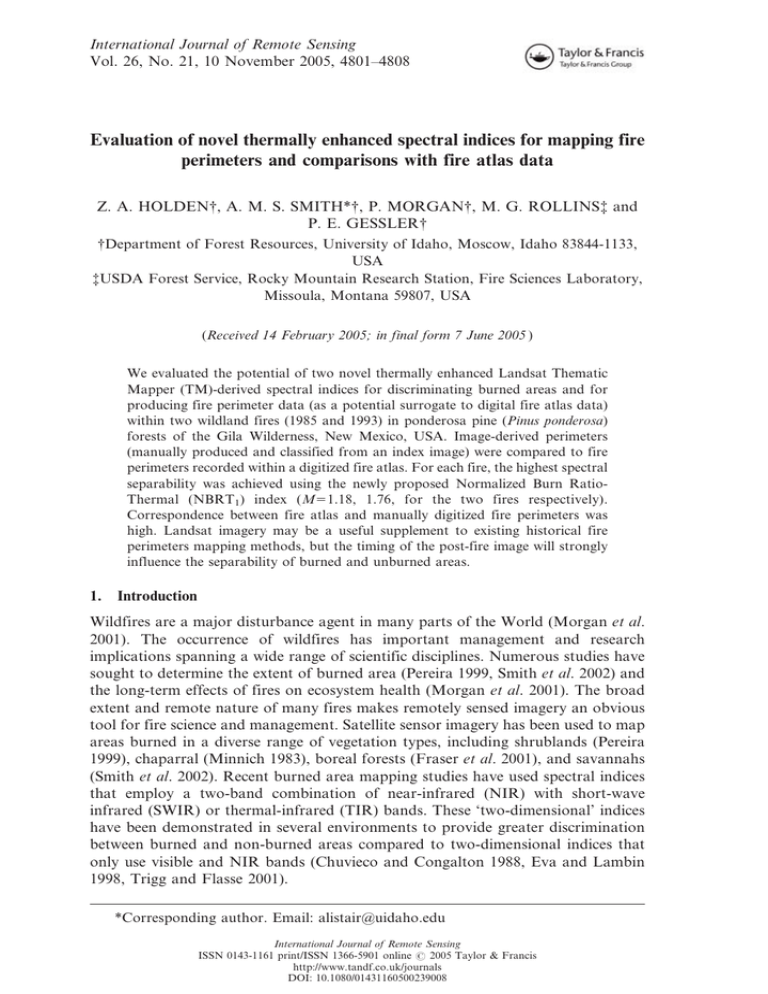
International Journal of Remote Sensing
Vol. 26, No. 21, 10 November 2005, 4801–4808
Evaluation of novel thermally enhanced spectral indices for mapping fire
perimeters and comparisons with fire atlas data
Z. A. HOLDEN{, A. M. S. SMITH*{, P. MORGAN{, M. G. ROLLINS{ and
P. E. GESSLER{
{Department of Forest Resources, University of Idaho, Moscow, Idaho 83844-1133,
USA
{USDA Forest Service, Rocky Mountain Research Station, Fire Sciences Laboratory,
Missoula, Montana 59807, USA
(Received 14 February 2005; in final form 7 June 2005 )
We evaluated the potential of two novel thermally enhanced Landsat Thematic
Mapper (TM)-derived spectral indices for discriminating burned areas and for
producing fire perimeter data (as a potential surrogate to digital fire atlas data)
within two wildland fires (1985 and 1993) in ponderosa pine (Pinus ponderosa)
forests of the Gila Wilderness, New Mexico, USA. Image-derived perimeters
(manually produced and classified from an index image) were compared to fire
perimeters recorded within a digitized fire atlas. For each fire, the highest spectral
separability was achieved using the newly proposed Normalized Burn RatioThermal (NBRT1) index (M51.18, 1.76, for the two fires respectively).
Correspondence between fire atlas and manually digitized fire perimeters was
high. Landsat imagery may be a useful supplement to existing historical fire
perimeters mapping methods, but the timing of the post-fire image will strongly
influence the separability of burned and unburned areas.
1.
Introduction
Wildfires are a major disturbance agent in many parts of the World (Morgan et al.
2001). The occurrence of wildfires has important management and research
implications spanning a wide range of scientific disciplines. Numerous studies have
sought to determine the extent of burned area (Pereira 1999, Smith et al. 2002) and
the long-term effects of fires on ecosystem health (Morgan et al. 2001). The broad
extent and remote nature of many fires makes remotely sensed imagery an obvious
tool for fire science and management. Satellite sensor imagery has been used to map
areas burned in a diverse range of vegetation types, including shrublands (Pereira
1999), chaparral (Minnich 1983), boreal forests (Fraser et al. 2001), and savannahs
(Smith et al. 2002). Recent burned area mapping studies have used spectral indices
that employ a two-band combination of near-infrared (NIR) with short-wave
infrared (SWIR) or thermal-infrared (TIR) bands. These ‘two-dimensional’ indices
have been demonstrated in several environments to provide greater discrimination
between burned and non-burned areas compared to two-dimensional indices that
only use visible and NIR bands (Chuvieco and Congalton 1988, Eva and Lambin
1998, Trigg and Flasse 2001).
*Corresponding author. Email: alistair@uidaho.edu
International Journal of Remote Sensing
ISSN 0143-1161 print/ISSN 1366-5901 online # 2005 Taylor & Francis
http://www.tandf.co.uk/journals
DOI: 10.1080/01431160500239008
4802
Z. A. Holden et al.
Researchers typically only use Landsat visible to SWIR bands in supervised
classifications, and generally exclude the TIR bands. Landsat imagery is also used
widely by natural resource managers in the USA, and is now being used to produce
perimeter databases or ‘fire atlases’, which are frequently used to assess fire hazard
and risk and departure of fire regimes from historical conditions. Fire atlases are
typically constructed weeks to years after fire events using personal accounts, maps
of the area burned, aerial photographs and, in recent years, satellite sensor imagery
(Minnich 1983, Morgan et al. 2001). Fire atlases do not typically include
information on the internal variations within the burned area but instead provide
land managers with the location and overall extent (i.e. the overall perimeter) of the
area burned (Morgan et al. 2001).
The objective of this letter is to provide an initial evaluation of two novel spectral
indices, which incorporate changes in the NIR, SWIR and TIR bands, for
discriminating between burned and unburned areas using spectral separability
statistics. This letter assesses both a new variant of an existing two-dimensional
index and evaluates several variations of a novel ‘three-dimensional’ index that uses
all of the NIR, SWIR and TIR Landsat bands. A secondary objective is to assess the
potential of archived Landsat imagery to derive fire perimeters as surrogates for
historical fire perimeter data for two surface fires in a ponderosa pine forest of the
south-western USA.
2.
2.1
Methods
Study area
The Iron Creek Mesa area is located within the 230 800 ha Gila Wilderness, and is
part of the Gila–Aldo Leopold Wilderness Complex in west-central New Mexico
(figure 1). Elevations in the Gila range from 1300 to 3300 m, and this study focuses
on the mid-elevation ponderosa pine forests that dominate Iron Creek Mesa and
surrounding drainages. We selected two fires for analysis, using historical fire atlases
of the region. The 28 000 ha Gilita Fire burned across Iron Creek Mesa from June
1993 to 10 September 1993, and the 18 000 ha Iron Fire burned across the northern
part of the Gila Wilderness from July 1985 until 15 August 1985. These large fires
killed few of the dominant large ponderosa pine and thus represent a challenge for
mapping perimeters from space.
2.2
Imagery preparation
Landsat 5 Thematic Mapper (TM) scenes corresponding to the first available
cloudless post-fire image dates were selected for both fires (Iron Fire TM image
acquired 22 October 1985; Gilita Fire TM image acquired 26 September 1993). We
converted the reflective and thermal bands of each Landsat TM scene into top-ofatmosphere reflectance and brightness temperature respectively. Using both the fire
perimeter maps and visual interpretation of the Landsat imagery, we randomly
selected 300 pixels. We classified selected pixels as either burned or unburned and
subsequently used them for separability analyses and image classification. Pixels
from burned and unburned areas for each index-derived image were assessed for and
generally met assumptions of normality (figure 2). Following Pereira (1999), the Mstatistic was then used to assess the utility of each Landsat band and spectral index
listed in table 1 to discriminate between burned and unburned areas. The optimal
index was identified as the index with the highest consistent M-statistic over both
NBRT for burned area assessment
Figure 1.
4803
Study area within the Gila–Aldo Leopold Wilderness fire atlas.
fires. Using this optimal index, the TM images were then classified as burned if they
fell within the mean¡2 standard deviations of the burned index values.
Following previous studies that incorporated the TIR bands of satellite sensors
(e.g. Eva and Lambin 1998), we assessed the potential of incorporating the Landsat
TIR band into the existing Normalized Burn Ratio (NBR) index. NBR and several
other fire indices rely on the principle that burning an area results in a lowering of
the NIR reflectance with a corresponding increase in both the mid-infrared
reflectance (Chuvieco and Congalton 1988) and brightness temperature (Eva and
Lambin 1998). Therefore, we sought to enhance the expected post-fire changes in the
NBR by incorporating the Landsat thermal band. These indices are referred to
hereafter as NBRTi (table 1). Furthermore, a modified version of the VI3T spectral
index (Barbosa et al. 1999), referred to herein as the VI6T index (Smith 2004), was
applied by replacing the Advanced Very High Resolution Radiometer (AVHRR)
band 3 values with the Landsat TIR band (band 6).
2.3
Accuracy assessment
Historical fire atlas data are generally coarse-scale data that show the spatial extent
of a fire. As we were primarily interested in comparing Landsat-derived fire
perimeters with a coincident fire atlas, we did not attempt to assess the unburned
patches within the overall fire perimeter. Therefore, we calculated the accuracy of
4804
Z. A. Holden et al.
Figure 2. Histograms of NBRT index image region of interest data for assessment of
normality.
Table 1. Spectral indices applied to determine the area burned.
Method
NDVI
Equations
a
ðr2 {SBTM6 Þ
ðr2 zSBTM6 Þ
NBR
NBRT2
a
r4 {r7
r4 zr7
Smith 2004
Chuvieco and Congalton 1988,
Key and Benson 2002
ðr4 {ðr7 SBTM6 ÞÞ
ðr4 zðr7 SBTM6 ÞÞ
0
@
NBRT3
Pereira 1999, Smith et al. 2002
r2 {r1
r2 zr1
VI6(T)b
NBRT1
References
r4
SBTM6
r4
SBTM6
{r7
1
A
zr7
ðr4 {SBTM6 Þ{r7
ðr4 {SBTM6 Þzr7
r denotes the top-of-atmosphere reflectance of band X, where X is given by the Landsat
sensor.
b
SBTM6 denotes scaled brightness temperature of the Landsat band 6 thermal band. In this
study the band 6 brightness temperature was divided by 10 000.
NBRT for burned area assessment
4805
Table 2. Spectral separability of Landsat TM-derived indices for mapping burned and
unburned areas.
TM band or spectral index
Iron fire (1985)
Gilita fire (1993)
Visible–SWIR bands
TM1
TM2
TM3
TM4
TM5
TM6
TM7
NDVI
NBR
0.02
0.04
0.07
0.43
0.12
0.71
0.28
0.75
1.08
0.41
0.13
0.37
0.78
0.67
0.99
1.07
1.09
1.66
Inclusion of thermal bands
VI6T
NBRT1
NBRT2
NBRT3
0.65
1.18
0.86
1.05
1.10
1.76
1.57
1.59
the index-derived technique by measuring the degree of omission and commission
along the image-derived and fire atlas perimeters.
3.
Results
The M-statistic values for each Landsat band and spectral index for both fires are
displayed in table 2. For the 1985 and 1993 fires, the NBRT1 index was most
spectrally separable. M-statistic values of all the indices for the 1993 fire were
notably higher than for the 1985 fire (table 2).
The correspondence between the fire atlas and manually digitized burned area
perimeters was high for both the 1985 and 1993 fires (84% and 89% overlap,
respectively, figure 3). In contrast to the time-consuming manual digitizing method,
the faster index-based approach more often misclassified large non-burned areas
(figure 3). If we assume that the hand-digitized perimeter is the true fire perimeter,
the fire atlas data had errors of commission and omission of 12.4% and 26.8%,
respectively, for the 1985 fire and 20.4% and 16.2% for the 1993 fire (table 3).
4.
Discussion
Given the limited dataset used in this analysis these results may not generalize to
other areas, as two fires from the same environment (albeit different fire seasons)
will not capture all possible variations in topographic, fire and environmental
characteristics. However, our results indicate that timing of the post-fire image
acquisition affected the ability of the spectral indices to identify area burned. Indeed,
the separability of the Normalized Difference Vegetation Index (NDVI) and NBR
indices were greatly improved in the post-fire image acquired only three weeks after
the 1993 fire, compared to the image acquired more than two months following the
1985 fire.
The ability of spectral techniques to discriminate between burned and unburned
areas likely depends strongly on the vegetation type, the fire severity (i.e. the
4806
Z. A. Holden et al.
Figure 3. Comparison of 1985 and 1993 fire perimeters derived from fire atlas data and
hand-digitized from Landsat TM imagery.
vegetation mortality), the speed of vegetation recovery, and the temporal
availability of the imagery.
In this region of the south-western USA, the decrease in spectral separability with
acquisition time after the fire could be due to the onset of the monsoon rains, which
often signal the end of the fire season. The resulting new vegetation growth and
recovery that follows the rain can be rapid and would quickly act to reduce
brightness temperatures.
The ability to detect burned forested areas might be improved in fires that are
largely ‘stand-replacing’ and where vegetation recovery is slow. As the rise in surface
brightness temperature is probably due to the reduction in evapotranspiration,
reduced surface albedo and increased soil cover (i.e. due to vegetation removal) (Eva
and Lambin 1998), the brightness temperature could potentially be considered a
measure of the vegetation recovery. As such, the NBRT indices could provide
Table 3. Accuracy of fire atlas perimeter data compared to image-derived fire perimeters.
Overlap (%)
Commission
Omission
Iron fire (1985)
Gilita fire (1993)
84.0
12.4
26.8
89.0
20.4
16.2
NBRT for burned area assessment
4807
pertinent information on the burn severity (i.e. post-fire ecological effects) beyond
that provided by the non-thermal NBR index.
The correspondence between the burned areas derived from Landsat and mapped
in the fire atlas was high. Clearly, considering either fire atlases or imagery-derived
perimeters as ‘truth’ is questionable. The digitized Gila Wilderness fire atlas used in
this study was produced retrospectively using 12-year-old field maps and educated
guesses on where the perimeter was likely to be based on geographic features and
local expert knowledge (Rollins, personal communication). Errors in fire atlas
mapping are particularly likely for older fires that occurred prior to the widespread
application of Global Positioning System (GPS) technology in resource and fire
management. Despite such limitations, several land management agencies in the
USA have begun developing fire atlases from satellite imagery and field maps as
part of fire management efforts. As yet, no standardized protocol has been
developed for building digital fire perimeter layers and the quality and accuracy of
potential data sources are highly variable.
5.
Conclusions
The apparent errors present within the fire atlas perimeter data indicate the need for
alternative methods to refine the accuracy of current fire perimeter maps. The
proposed new NBRT1 index series shows promise for identifying burned areas
within environments where fire-induced vegetation mortality is low. Future research
should evaluate how timing of post-fire image acquisition influences discrimination
between burned and unburned areas using these and similar two- or threedimensional indices. The indices demonstrated herein should also be tested across a
range of vegetation types, fire regimes, fire sizes, and geographic areas to assess their
utility and accuracy. Although the degree of NBRT commission errors observed in
this study suggests that Landsat data should be manually digitized to produce
historical fire perimeters at the quality needed by natural resource managers, the
temporal dependence of the surface temperature to parameters such as the
vegetation recovery and fractional pixel cover warrant further assessment.
Acknowledgments
This research was supported in part by funds provided by the Rocky Mountain
Research Station, Forest Service, US Department of Agriculture. The Upper
Midwest Aerospace Consortium provided additional support. Thanks to the Gloria
Barron Wilderness Society Scholarship and The Wilderness Society provided
additional funding. We also thank Andrew Hudak and Lee Vierling for their early
review of this manuscript.
References
BARBOSA, P.M., GREGOIRE, J.-M. and PEREIRA, J.M.C., 1999, An algorithm for extracting
burned areas from time series of AVHRR GAC data applied at a continental scale.
Remote Sensing of Environment, 69, pp. 253–263.
CHUVIECO, E. and CONGALTON, R.G., 1988, Mapping and inventory of forest fires from
digital processing of TM data. Geocarto International, 4, pp. 41–53.
EVA, H. and LAMBIN, E.F., 1998, Burnt area mapping in Central Africa using ATSR data.
International Journal of Remote Sensing, 19, pp. 3473–3497.
FRASER, R.H., HALL, R.J. and LANDRY, R., 2001, Burnt area mapping across Canada’s
boreal forest zone using SPOT VEGETATION calibrated with Landsat TM imagery.
4808
NBRT for burned area assessment
Third International Workshop on Remote Sensing and GIS Applications to Forest Fire
Management (Paris: EARSEL), pp. 113–137.
KEY, C.H. and BENSON, N.C., 2002, Measuring and remote sensing of burn severity. US
Geological Survey Wildland Fire Workshop, Los Alamos, NM, 31 October–3
November 2000. USGS Open-File Report 02-11, p. 55.
MINNICH, R.A., 1983, Fire mosaics in southern California and northern Baja California.
Science, 219, pp. 1287–1294.
MORGAN, P., HARDY, C.C., SWETNAM, T.W., ROLLINS, M. and LONG, D.G., 2001, Mapping
fire regimes across time and space: understanding coarse and fire-scale fire patterns.
International Journal of Wildland Fire, 10, pp. 329–342.
PEREIRA, M.C., 1999, A comparative evaluation of NOAA/AVHRR vegetation indexes for
burned surface detection and mapping. IEEE Transactions on Geoscience and Remote
Sensing, 37, pp. 217–226.
SMITH, A.M.S., 2004, Determining nitrogen volatilised within African savanna fires via
ground-based remote sensing. PhD thesis, University of London.
SMITH, A.M.S., WOOSTER, M.J., POWELL, A.K. and USHER, D., 2002, Texture based feature
extraction: application to burn scar detection in Earth Observation satellite imagery.
International Journal of Remote Sensing, 23, pp. 1733–1739.
TRIGG, S. and FLASSE, S., 2001, An evaluation of different bi-spectral spaces for
discriminating burned shrub-savanna. International Journal of Remote Sensing, 22,
pp. 2641–2647.

